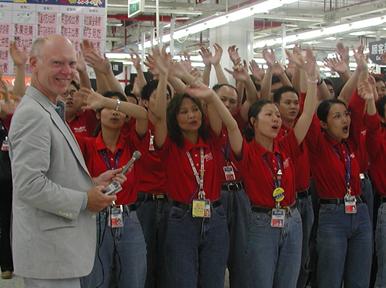In 1980, Shenzhen was an unimportant fishing village adjacent to Hong Kong’s new territories. Its population was 30 000.
Today, Shenzhen on a per capita basis is China’s richest city. Its population is 13 million, and it has become the world’s fastest-growing city. Shenzhen is a technology centre – headquarters for Huawei and Tencent. It has the world’s 4th biggest container port and China’s 5th busiest airport.

During the 40 years from 1980 to 2020, Shenzhen’s economy averaged annual growth of 21%! There has never been anything like it.
What happened? How did this extraordinary transformation take place?
Deng Xiaoping came to power in 1978, determined to overcome the chaos and devastation of the ten-year Cultural Revolution. Deng declared China open to the world and in 1980 designated Shenzhen a special economic zone to test the principles of a market economy.
The results succeeded beyond anyone’s wildest expectations. Since 1980, a staggering 850 million Chinese have been lifted out of poverty.
Ultimately, China created six special economic zones and 14 coastal regions where foreign investment and entrepreneurship were promoted. But Shenzhen was the first to be allowed to overturn the strictures of communist economic orthodoxy. Citizens were allowed to buy land. Administered prices set by planners in Beijing were gradually abolished as market forces were allowed to determine prices. Similarly, wages were freed from state control. Foreign banks were allowed in and tax policy was used to attract investors.
Model for the developing world
The World Bank for two decades has pointed to southern China’s pro-growth policies as a model for the developing world. Once closed to trade, today China is open. Startups are promoted and it is easy to start a business. China’s private sector, virtually non-existent in 1978, now accounts for 70% of economic output.
When I first visited Shenzhen in 2005, I was stunned to observe shoppers rushing into the aisles of the new Walmart Super Center when doors opened in the morning. I was further stunned to watch young store employees in red shirts sing the company song for a visiting journalist. This panorama of consumerism was a jolting wake-up call to how much China was changing. I thought back to the 1960s, when angry Red Guards waved little red books and sang the praises of Chairman Mao.

What would Mao think of the new capitalist China, or – as the ruling communist party calls it – socialism with Chinese characteristics? Some analysts say Mao would be appalled by the consumerism and income inequality. Others say he would take pride in the rise of China and the success of Chinese people competing in the world economy.
World’s biggest megalopolis
Shenzhen today is part of the world’s biggest megalopolis, the Greater Bay Area, an amalgam of nine cities comprising 110 million people radiating out from Hong Kong in Guangdong province. Collectively the region has attracted $1 trillion of foreign direct investment and accounts for 10% of China’s GDP and 25% of exports.
The views of the writer are not necessarily the views of the Daily Friend or the IRR
If you like what you have just read, subscribe to the Daily Friend

